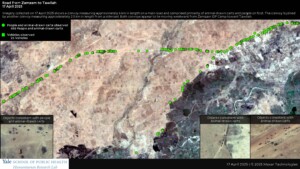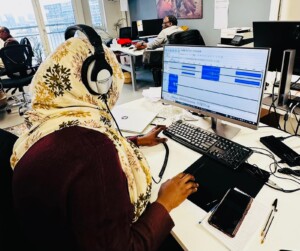OCHA: Watery diarrhoea cases continue to decline in Sudan
The number of reported Acute Watery Diarrhoea (AWD) cases remains low in Sudan, with 98 cases registered between 17 December 2017 and 13 January 2018, according to the federal Ministry of Health and the World Health Organization (WHO).
The UN humanitarian office (OCHA) in Sudan reported in its first humanitarian bulletin of this year that the most recent deaths caused by Acute Watery Diarrhoea were reported in Red Sea State in the first week of January. Before that, no deaths were registered after mid-November.
 Cholera patients in Salemeen village in eastern Sudan's El Gedaref, July 2017 (RD
Cholera patients in Salemeen village in eastern Sudan's El Gedaref, July 2017 (RD
The number of reported Acute Watery Diarrhoea (AWD) cases remains low in Sudan, with 98 cases registered between 17 December 2017 and 13 January 2018, according to the federal Ministry of Health and the World Health Organization (WHO).
The UN humanitarian office (OCHA) in Sudan reported in its first humanitarian bulletin of this year that the most recent deaths caused by Acute Watery Diarrhoea were reported in Red Sea State in the first week of January. Before that, no deaths were registered after mid-November.
Cholera
In spite of numerous independent confirmations (conducted according to WHO standards) that the disease which broke out in Blue Nile State in August 2016 was cholera, the Sudanese authorities and several international organisations still call it ‘Acute Watery Diarrhoea’.
The infectious disease spread to eastern Sudan, and later to northern and central Sudan. It fully hit Khartoum in May last year.
According to the WHO and the Sudanese Ministry of Health in mid-October 2017, the total number of reported cases across 18 states of Sudan reached more than 35,000 people – including 800 related deaths since the outbreak of the disease.
Doctors of Sudan’s National Epidemiological Corporation reported in early July that year however, that nearly 24,000 Sudanese had been infected and 940 cholera patients died.
Slight increase
Despite the low level of new cases, a slight increase in cases was reported during the last week of 2017 and the first week of this year: 46 and 30 new cases respectively were registered.
This was the highest level of new cases per week since Week 44 (50 new cases), and more than twice the average of all weeks since then (17.7 new cases on average from Week 45 to Week 51), OCHA reported.
Active transmission has been reduced to three localities in Red Sea State. The assessment of the situation in Red Sea State is urgently required given the persistent cases of watery diarrhoea in the area during the past six weeks.

Approach
To interrupt the transmission of the disease completely, response activities must continue until there are no new cases reported for four consecutive weeks in all localities nationwide, with laboratory confirmation of stool samples for the same causative agents, OCHA noted.
WHO and the Sudanese Health Ministry proposed an in-depth evaluation of responses and risk assessment to refine control efforts in early 2018. WHO also advises partners to shift their public health approach towards multi-sectoral interventions, moving from purely emergency response to include recovery and development response.
Follow #CholeraInSudan, #الكوليرا_السودان for ongoing coverage by Radio Dabanga











 and then
and then